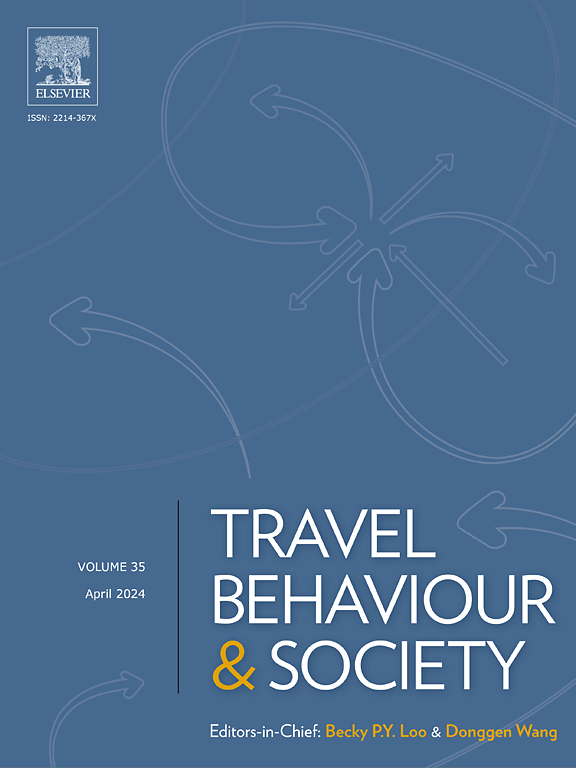集成机器学习和离散选择建模的增强购物目的地选择模型
IF 5.1
2区 工程技术
Q1 TRANSPORTATION
引用次数: 0
摘要
本研究建立了包裹级购物目的地选择的两阶段建模框架,考虑了购物地点选择行为的多维因素和异质性。研究分为两个步骤:(i)开发一个购物地点选择集生成过程,包括特征选择,包括商业类型和地点;(ii)开发一个计量经济模型来预测考虑未观察到的异质性的个人购物地点选择行为。该研究提出了一种结合机器学习(ML)和基于随机效用的离散选择建模(即混合logit模型(MXL))的新方法。MXL模型的结果显示,距离中央商务区的旅行时间和距离越长,人们去商店进行日常购物(如杂货)的可能性就越小。随机参数分析表明,尽管期望购物地点周围的高零售集中度应该会吸引个人购物,但仍会有人可能不打算在这些地点购物。同样,人们可能愿意去需要更长的旅行时间的商店购买特殊物品。本研究中开发的模型将在综合交通、土地利用和能源(tle)建模系统中实施,以改善目的地选择的行为表征。本文章由计算机程序翻译,如有差异,请以英文原文为准。
Integrating machine learning and discrete choice modeling for enhanced shopping destination choice model
This study develops a two-stage modeling framework for parcel-level shopping destination choice, accounting for multi-dimensional factors and the heterogeneity in shopping location choice behavior. The study follows two steps: (i) developing a shopping location choice set generation process comprising feature selection and encompassing business types and locations, and (ii) developing an econometric model to predict individual shopping location choice behavior considering unobserved heterogeneity. The study advances a novel approach of combined machine learning (ML) and random utility-based discrete choice modeling (i.e., mixed logit model (MXL)). Results from the MXL model reveal that the longer the travel time and distance from the central business district, the less likely people are to visit a store for routine shopping (e.g., groceries). The random parameter analysis reveals that although high retail concentration surrounding the desired shopping location should attract individuals for shopping, there will be people who still may not intend to shop at those locations. Similarly, people may be willing to travel to stores requiring longer travel times for special item shopping. The models developed in this study will be implemented within an integrated transport, land use, and energy (iTLE) modeling system to improve the behavioral representation of destination choices.
求助全文
通过发布文献求助,成功后即可免费获取论文全文。
去求助
来源期刊

Travel Behaviour and Society
TRANSPORTATION-
CiteScore
9.80
自引率
7.70%
发文量
109
期刊介绍:
Travel Behaviour and Society is an interdisciplinary journal publishing high-quality original papers which report leading edge research in theories, methodologies and applications concerning transportation issues and challenges which involve the social and spatial dimensions. In particular, it provides a discussion forum for major research in travel behaviour, transportation infrastructure, transportation and environmental issues, mobility and social sustainability, transportation geographic information systems (TGIS), transportation and quality of life, transportation data collection and analysis, etc.
 求助内容:
求助内容: 应助结果提醒方式:
应助结果提醒方式:


